2020-2021
Career Opportunities for Women in Defence By Wing Commander Rocky Rodrigues (Retd.)
Event Details:
Date : 15th September, 2020
Time : 11 am.
On the occasion of Engineer's Day, Society of Women Engineers (SWE CCEW) had organised an online talk on Career Opportunities for Women in Defence with a special reference to the Air Force.
The session was conducted by Wing Commander Rocky Rodrigues (Retd.), who has served in the Indian Airforce for more than twenty years. He is from the Administration, Air Traffic Control branch and is trained in Radar Controlling. He was the Squadron Commander of ATS squadron at Gorakhpur and also served as a Principal of Admin Training Institute at Belgaum. He was Chief Instructor, Outdoor Training for two years at the prestigious Air Force Academy.
The session covered topics related to work for women engineers in DRDO, DOT, sports, DIAT, CMO and other defence related fields.
Sir started the session by saying that if a person has a good qualification, if he/she has a degree, then everything in life will sooner or later work out. He has heard of many cases where people have completely changed their fields or career paths, even two to three times, and are still doing well in their lives. There always will be a chance to bounce back. Sir highlighted the fact that there are certain expectations people have from a person in uniform, which they have to live up to. The rules they have to follow, the expectations they have to live up to, give them motivation and they hold these very close to their heart. Sir explained that defence is a kind of an organisation which is non-political, non-religious, and there is no reservation of any kind to gain entry into defence, which is the beauty of it. If there is no kind of reservation, the candidates chosen are selected entirely on their merit and that is the reason why we can sleep peacefully at night while it is them who are protecting us even in extreme conditions like cold weather or deserts. Sir shared anecdotal experiences from his own life to make everyone understand the kind of sacrifices defence officers have to make in order to fulfil their duty. Apart from that, the audience was also introduced with the perks of being in defence. A person in defence fields has a chance to become the member of prestigious clubs, he/she gets to travel the length and breadth of the country, they get to know about various cultures, they get transfers at different places which they would have never been able to visit normally. The opportunities are galore and the work environment is amazing.
Sir shared the history of ladies working in the defence services, how he worked with the first batch of 12 women officers 28 years ago, and the kind of integrity, dedication and zeal the women officers had, to do as good as their male counterparts.
Then, Sir, touched upon the fields which were available for the audience, which mainly was comprised of women engineers. He laid out all the rules and criteria to join defence, be it, army, navy, or air force. However, he made emphasis on the fact that whatever you are doing now, be the best in it because that will be favourable for you while joining. He said that the basic criteria are that you should be well qualified, should be physically fit, have to develop your communication skills, should have command over your language, and most importantly, you should inculcate moral and ethical values intrinsically. The board will judge you on your leadership skills, the ability to motivate yourself and the people around you, and the ability to make tough decisions like national decisions in times of crisis.
Sir explained about the selection process and how it is very strict in nature since there is no reservation of any kind. He said that sometimes the entire batch is washed out and not even a single candidate is selected. This is because they are extremely specific about their criteria. He even explained the examination process which consists of physical tests, some tests which test your thinking ability, group discussions, etc.
Sir told us that the selection committee does not look for some super intelligent people but normal people with a good thinking ability. He also said that engineers not only have the option of becoming technical officers in the aeronautical fields but also the option of becoming pilots. In fact, 70 to 80 percent of the pilots are engineers. Engineers have an option to become technical officers, pilots, administrative officers or something in logistics. Then the session was open for questions and Sir answered all the questions in detail and patiently. Topics like opportunities in DRDO, post retirement opportunities, air traffic control, fighter controllers, the examinations like EKT and AFCAT for engineers and the selection criteria for them, the height restriction for women, some doubts about eye vision, opportunities after MS, were taken up during the question and answer session. Sir ended the session by wishing us well and encouraging us to join defence related fields.
Online Mental Health Session by Dr. Ambrish Bhatt
Event Details:
Date : 20th June, 2020
Time : 11 am.
An online mental health session by Dr. Ambrish Bhatt, was conducted for the students and staff of CCEW. Dr. Bhatt gave us a really interesting and thought-provoking session which inspired everyone to focus on their strengths and improve the points which need improvement.
Dr. Bhatt has been facilitating human resource development for the past 22 years which was evident in his talk. He tried to teach us about how a person thinks by giving examples from his own life and from the lives of the people he has helped which gave us a way to find something similar in our own lives and improve on that.
One of the important points explained was that we should be responsible for our own actions. Whatever we do should be a result of our own thinking and not a result of some external stimulus and that we should not react and let that stimulus affect us in a negative way.
The session was extremely interactive and filled with activities to help the attendees understand the session better. One such activity included us writing down our strengths and the points we would like to improve on (as opposed to weaknesses, a term Dr. Bhatt did not like to use). He explained that writing these down would help us reflect upon them.
Dr. Bhatt encouraged everyone to seek help whenever they feel it is necessary and made us understand that our mental health should not affect our daily functioning. He answered all the questions asked by the attendees, patiently and in detail and was open to help anyone who needed his guidance.
Mental Health Webinar by Dr. Swati Desai.
Event Details:
Date : 27th June, 2020
Time : 11 am.
This Saturday morning students and staff of CCEW attended a Mental Health Webinar by Dr. Swati Desai. The session started with a peaceful meditation session which helped everyone to become aware of their surroundings and concentrate on the webinar.
One of the first slides of Dr. Swati’s presentation provided us information about the actual statistics by the WHO, listing the number of people who suffer from mental health issues, which is a truly shocking number and urges you to address these issues in a proper manner.
Dr. Swati made us aware about the categories of mental health issues and the different types of help we can seek to address them. Her personal opinion was to seek help in a combinational manner, i.e.; both psychiatrically and psychologically(i.e.; a combination of medication and therapy), or any other way which a person feels can help him, be it a group effort, focusing on himself, meditating, watching related YouTube videos or listening to some podcasts or connecting with organisations like, The Art of Living.
She also guided us on how to deal with any friend or family member who is facing any such issue. The key is to not to be judgemental and to patiently listen to them without giving any unwanted advice and encouraging them to seek help if they feel it is necessary.
In her opinion, denial is certainly not an option and whichever method you may choose, it will take time. Dr. Swati was incredibly calm and patient and answered all the questions asked by the attendees.
The session was incredibly informative and interactive and helped everyone realize that if they are dealing with some mental health issue, seeking help is important, be it through any medium and that there is no shame in doing so.
A journey from swanky corporate to rural Bihar by Ihitashri Shandilya, founder and CEO of Mithilasmita
Event Details:
Date : 1st November, 2020
Time : 12.30 pm
The speaker Ihitashri Shandilya narrates the remarkable journey of her life from the corporate world to entrepreneurship. Her brainchild organization Mithilasmita is an award- winning social enterprise with the mission to preserve & promote the heritage folk art of India.
On a visit to her ancestral village in India, Ihitashri found that maintaining the sanctity of traditional Madhubani paintings (also known as Mithila paintings) was no longer considered worthwhile by the artists. In the name of contemporary art, the traditional style of this world-famous Indian art was being distorted. Her grandmother had been working with women in Madhubani art for years but was strapped for a sustainable plan. The majority of the artisans are rural women and consider handicraft to be merely a hobby. However, artists were willing to switch back to traditional techniques of creating artwork as long as their livelihood needs were met. Handicrafts production stands next only to agriculture in developing nations like India. Most of the Indian art forms are more than 1000-year-old heritage, yet India supplies less than 2% of the global handicrafts demand.
Ihitashri is a pioneer in identifying handicrafts as an employment opportunity. When women are economically empowered, they invest their earnings in their families. The speaker comes from a modest background and had to face several problems during the early days. From balancing her family life and work to her opinions not being taken seriously, she overcame all the difficulties and barriers in her way to success. Her mother was her strongest support system, who had her back at all times. Ihitashri, a staunch feminist, believes that a woman should claim her position on the table and should never let go of her credit.
The vision of Mithilasmita is to create a social ecosystem that preserves and promotes the heritage of Madhubani paintings and other traditional art forms of India employing generating sustainable livelihoods for the rural women artists. Mithilasmita provided direct employment to over 500 artists, train 10,000 artisans, and impact over 100,000 lives in 5 years. It allowed the rural artists, not only to showcase their work on a bigger canvas but also to earn their living through it. Ihitashri used to work at IBM in the morning and set up a gallery that she attended in the evening. As soon as she realized that her new venture needed her full attention, she quit her job, devoted all of her time to Mithilasmita, and focused on expanding the market. The company identified, developed, and fostered new partnerships with corporates, museums, and galleries across India to have increased visibility of Milthilasmita products. Over the past eight years, the organization has showcased the art form globally. To date, they have exhibited at the Rubin Museum of Art in New York and GVK Jaya He Museum Store in Mumbai. They also have a folk-art gallery in Bengaluru.
The speaker stressed the importance of technology in women empowerment. She put forth some interesting anecdotes about how her background in technology proved advantageous in networking, marketing, brand building, etc. Increased awareness through access to global information is one of the key factors that benefit women entrepreneurs. Her journey is indeed inspirational for all. Truly, there is no force more powerful than a woman who is determined to rise.
E-mart, where your vision turns into reality by Vasundhara Chavan
Event Details:
Date : 1st November, 2020
Time : 11:30 am.
The main idea behind E mart is to create an immersive shopping experience by using augmented reality (AR). The speaker shared her vision about the future of shopping malls and markets and threw light on the wide potential of augmented reality to revolutionize industries and enterprises.
Augmented reality is the real-time use of information in the form of text, tables, images, etc. In simple words, AR overlays digitally created content into the user’s real-world environment. It is a common experience that concepts are easier to grasp and remember when they can be visualized. Hence the speaker says that the use of AR will surely add hours to our day! It will bridge the gap between the digital and physical worlds by transforming our way of working, playing, learning, and networking.
Vasundhara touched on the history of AR, stating that it was first developed in 1968 by Ivan Sutherland. In 2018, Assemblr, a content creation platform that lets everyone create their AR content was launched. Personal shopping mall guide, displaying restaurant ratings, reviews, or school information on the screen when the camera is pointed at it are some of the applications of AR. Augmented Reality (AR) and Virtual Reality (VR) offer distinct experiences but share similar underlying technology. VR simulates a physical presence in real or imagined worlds and allows the user to interact in that world. In contrast, AR superimposes virtual objects over the real world such that the content appears to be a part of the real-world scene. Mixed reality is developed by combining these two technologies. Games, AR browsers, 3D viewers, GPS are a few of the common applications.
The 360-degree E mart surrounds the user with a virtual shopping environment. It is a completely immersive experience that allows customers to interact with the products in an as detailed way as they desire. It will seamlessly merge the real world with virtual objects by the combined use of experiential retail, algorithms, and software. Experiential retail aims at the convenience of the customers and benefits the sellers. The COVID-19 has given an impetus to innovations by using AR technology. The aim of being socially distant but virtually connected is fulfilled by AR. This has led to the positively growing trajectory of AR due to increased demand for virtual experiences. From retail to education, healthcare, marketing, manufacturing, emergency response, AR is positioned to drive business value across sectors. The companies are quickly realizing the importance of investment in AR.
Next, the speaker explained the stepwise process of AR in smart devices. It includes image acquisition, feature extraction, pattern detection and matching, geometric verification, and associated information retrieval. The technologies used in E mart are Unity, Vuforia, AR Core, etc. The main algorithm used is SLAM (Simulation Localization and Mapping), which is an optimization problem.
To create AR feasibly and realistically at low power, the use of AR portal, Web-based AR, and marker less AR are combined. AR portal allows the user to walk into another world in augmented reality, while web-based AR is an AR experience held within a webpage. Marker less AR means that there are no pre-programmed instructions into the device- it detects items on the fly. The recognition algorithm looks for patterns, colors, and other features.
Lastly, Vasundhara addressed some of the challenges faced in AR technology. They include regular content updates, maintenance, scene and object recognition training, and correct display of visuals. With the rapidly growing pace of technology and innovation, these challenges will be overcome soon and the future will be AR- friendly for all.
Harnessing Technology for Social Good by Tanya Jojy and Poorva Bhalerao
Event Details:
Date : 1st November, 2020
Time : 2 pm to 3 pm
One of the topics for day 3 of the Incube conference was ‘Harnessing technology for social good’. Tanya Jojy and Poorva Bhalerao, the speakers, began with a poll. Many of the attendees responded saying that some kind of fear pertained amongst them due to the rapid progress in technology. They then threw light upon the history of technology, right from the 1 st transistor in 1947, a pager, CDs, and a lot more till the recent developments in artificial intelligence and machine learning. They shared few laws like Moore’s law, etc. which stated the rate at which technology was progressing.
They led us to understand that almost 1 million people in the world are having some kind of disability, which may be visible or invisible. E.g. Dyslexia is one such kind of learning disability. This highlighted the fact that technology must be accessible to all. On the other hand, the world is facing many issues like cyber-crime, hacking, pollution, stress, unemployment, distraction, bad posture, violence, energy consumption, poverty, etc. They also shared examples of projects which helped solve some of these issues. Devices for soil sampling, the mechanism for timely consumption of TB tablets, and other low-cost diagnostic tools, carbon footprint awareness were some of them.
They explained sustainable software engineering. It is a new paradigm in software engineering that is guided by 8 principles of embodied carbon, energy proportionality, networking, electricity, carbon intensity, measurement and optimization, carbon and demand shaping. It refers to software, hardware, electrical market, climate science, data center design all working hand in hand to build such technology or software which cuts down energy consumption and use of resources. E.g. Microsoft’s Natick is a project in which an entire data center was submerged into the sea for ensuring natural cooling.
They further spoke about the social impact revolution which can be observed by the change in investments, policies, choice of careers, how funds are endowed. People are now looking forward to returning on investment as well as return on humanity and are interested in projects that have a vision for society. Hackathons, contributions to NGOs, to name a few, are ways of becoming a part of this revolution. They also explained how involvement in such projects develops a personality, helps understand people, their problems and diversity, improved insights, continual innovation, etc.
They highlighted points like being aware of the social issues and thinking ways to solve them, making technology cheap and accessible to all. Elaborating design thinking, they said that good design is the basis of a good product. Sustainability, psychology, a good user interface, and a good user experience is very important. They stated a fact that people usually take into consideration, the negative effects of technology. But, if we study these negative effects and think of the long-term impact of the technology before designing it, then it will surely reduce them. Technology will have a bright future!
Analysis of EMG Based wrist movement classification methods by Rucha Kulkarni
Event Details:
Date : 31st October, 2020
Time : 3 pm to 4 pm.
Rucha Kulkarni was one of the speakers at the Incube Conference, 2020. Rucha is a final year Electronics and Telecommunication Engineering student who is interested in Biomedical Engineering research. She started her talk by explaining how the use of biosignals can change the face of rehabilitation engineering. Rehabilitation engineering involves developing technology to help people with any kind of disability or impairment.
She went on to explain the applications of rehabilitation engineering, which are:
- Prosthetics- Rucha gave the example of Bucky Barnes from avengers and his metal arm and explained how the signals from the muscles or brain are used to operate the arm. In the real world, this technology is not developed to that extent but is being worked upon.
- Human-Computer Interaction – Rucha gave the example of the IIT Bombay Techfest she had visited where she witnessed a project which made use of signals from the arm to operate a foot brace. This project could help people with paralysis, by flexing the wrists they could send signals to move the brace up and down.
Then, she explained what Electromyography (EMG) is and how does it work by giving examples of EMG signal graphs and an explanation of the mathematical aspect of it.
Rucha made sure the session was not monotonous by showing a video about wrist anatomy, which depicted the wrist joint movements. It showed the muscles in the human wrist and explained which muscle is used for which type of wrist joint movement and how it sends signals. For an accurate result, while analysing, one needs to make sure the proper muscle is used to generate a particular signal.
The talk then moved on to the technical part of EMG, which includes signal processing along with some algorithm (Machine Learning or Deep Learning Algorithm or Fuzzy Logic) to calculate accuracy. The flow is, first obtain the EMG signal from the particular body part, figure out the time window, pre-process it (choose bandwidth), and then feature extraction. Each signal has a different feature and whenever you are applying an algorithm, you need specific features to extract. Then comes a proper algorithm selection and accuracy checking.
Then, Rucha shared with the audience, four different papers she had been reviewing and compared the accuracy results for each of them. Each of the papers had different algorithms, different numbers of features used along with some other factors. All the papers were compared and it was shown how different factors can have different accuracy results.
Rucha went on to explain pre-processing and feature extraction- EMG signals are obtained by EMG electrodes (Ag, Ag/Cl electrodes). The electrodes are placed at the desired muscle locations to generate signals. These signals are filtered and sampled according to the requirement and then a specific time window is decided. If the signals are extracted from a very long window, a lot of data variation is caused, which might give a false positive or false- negative result.
According to Rucha, these are the features that can be extracted- Time domain and frequency domain. The time domain has standard deviation, variance, zero crossing, maximum absolute value, etc. The frequency domain has waveform length, mean frequency, frequency energy, peak frequency, etc. Lots of papers use different combinations of these features for better accuracy.
In the conclusion, Rucha compared the four papers using the above-mentioned features and explained how the accuracy differs.
Inauguration and ‘Innovation-Key to Coexistence by Dr. Anuradha Ganesh
Event Details:
Date : 30th October, 2020
Time : 5 pm to 6.15 pm
This year, The Society of Women Engineers, Cummins College of Engineering for Women (SWE CCEW) chapter had organized its flagship event for the second consecutive year- The Incube Conference on the 30 th , 31 st of October, and 1 st of November 2020. The theme of this year’s conference was ‘Co-existence’. The conference started at 5.00 pm and Rashi Gulhane, SR, SWE CCEW, gave a brief introduction about the theme of the conference.
The Principal of CCOEW, Dr. Madhuri Khambete, inaugurated the conference and spoke about the evolution of the institution. She highlighted the efforts of Maharshi Karve and spoke about the establishment of Cummins College of Engineering for women and how the SWE chapter was relevant to the institution. She put forth that, though women face a lot of challenges in the male-dominated engineering field, people are gradually accepting the change as women prove that they can co-exist.
Next, Dr. Anagha Kulkarni, Faculty Advisor SWE CCEW and HOD IT, applauded the completion of 4 years of the establishment of the SWE-affiliate since March 2016. She gave an introduction about the work of SWE CCEW and also mentioned how the Incube conference has helped the students in many ways. She then introduced Dr. Anuradda Ganesh who was the speaker of the day.
Dr. Anuradda Ganesh had been a professor at IIT Bombay for 25 years and is currently the Director, Research and Innovation, and Chief Advisor to Chief Technical Officer at Cummins India. In addition to that, she has many awards and achievements to her credit. She began by stating that change is the only constant thing and how disruptive changes like the ongoing pandemic, force us to leap. She stressed the need to look at a problem or any situation in a very structured way by doing the following:
- Accept the change
- Make a priority list
- Check out the list of available tools, e.g. Technology, digitalization, communication, networking, etc.
- Innovation, upskilling, reskilling.
She then shared some fantastic videos regarding innovations that people had come up with during the lockdown period to maintain social distancing and various safety measures. E.g. Protective masks and eye ware, hands-free door handles in supermarkets, positive pressure spacesuit, a vehicle that helps maintain social distancing. Throwing light upon the impact of digitalization in our lives, she gave examples of ATM, Paytm, online medical consultancy, online shopping, online education, online cooking tutorials, online marriage celebrations, etc. She further said that it is important to forget in order to innovate; let go in order to move on, adapt, and co-exist peacefully. Innovation in itself is a disruptive and a very fast process. She added that creativity is the new normal and shared a video showing how the convocation ceremony was organized virtually for the students of IIT Bombay. She stressed the fact that creativity is not just an art but also involves science and technology. She threw light on how important it is to take risks to survive. She highlighted that though there are chances of robots replacing humans in many jobs, there will be many newly available jobs, demanding a greater skill set. Hence, upskilling and multitasking is important. She put forth the fact that women’s issues can be solved by more innovation in the field of STEM and networking. She concluded by saying that creativity and innovation is the key to co-exist.
Lifecycle of an Engine by David Green
Event Details:
Date : 30th October, 2020
Time : 6:15 pm to 7:15 pm
David Green, the New Product Development Technical Leader at Cummins India, started his talk by explaining what Product Life Cycle exactly is. He elaborated on how the life of a new product starts, grows, and then ends at one point. The life of a new product begins from technology and research, then moves on to the development, launch, growth, maturity, decline, and finally obsolescence. A product goes through all these stages over a large period.
He talked about two engines- BS4 and BS6 launched by Cummins in 2017 and 2020 respectively. BS4 has two engine platforms and 2 architectures with EGR and SCR variants whereas BS6 has 2 engine platforms and 1 architecture with SCR variant only. Explaining the product life cycle of the two engines, he stated that the technology and research stage of BS6 started in 2015, followed by product development in 2017 and then the launch in 2020. BS4, currently, is in the product maintenance and services and support stage.
He talked about the recent launching of BS6 amidst the pandemic due to which there was a significant reduction in the demand by 90%. Cummins faced a lot of challenges in manufacturing and supply chain, delayed market feedback, and more. Despite all these hurdles, they did a commendable job at managing everything and had a very successful launch of BS6 on 1 st April 2020.
He remarked that the job isn’t done once a product is launched. Launching is followed by product maintenance and providing persistent services and support in various ways. To provide world-class service support to the BS4 and BS6 after-treatment systems, Cummins has set up more than 250 Component Care Centers to complement the Cummins engine and Tata services centers.
David concluded his talk by stating the implications of the Product Life Cycle and how long-term product planning and technology research needs to be aligned in a way that technology exists to support timely new product development and to ensure that market-leading new products are launched.
New Normal- Navigating a once-in-life pandemic by Neha Tiwari
Event Details:
Date : 31st October, 2020
Time : 12:30 pm to 1:30 pm.
Neha commenced her talk by giving a brief introduction of herself and her journey of working in Cummins India for the past 15 years, initially as a mechanical engineer and now as an HR. She, then, showed the audience a video about the “new normal” in which the narrator talked about the pandemic and its impacts, various restrictions imposed on us, the increasing fear and uncertainty, our changing lives, and how all of this is leading us to the “new normal”.
Neha observed that we’ve always had mechanisms to deal with earthquakes or storms or floods but none for a pandemic and hence she informed the audience about the 3 C’s of navigating the pandemic – 1. Compassion 2. Competence and 3. Change Management.
Speaking about Compassion, she first urged everyone to be self-compassionate - which involves taking care of ourselves, accepting our vulnerability, and seeking help if necessary. She then moved onto the importance of being compassionate to others – which involves helping and supporting those in need in these difficult times and being there for someone without judging them.
Five different quick polls were conducted in which the audience was asked whether they had faced the fear of failure, mental health decline, or loneliness during the pandemic. The results of the poll concluded that the audience agreed to have faced the above-mentioned issues some of the other times throughout the past few months.
Moving on to Competence, Neha reminded the audience to recognize what they’re good at and to lean into it, to build their competence, and to accept that the best time to learn and to boost their careers is NOW.
Finally, about Change Management, she remarked that just as the world wasn’t the same after WWII, similarly, it won’t be the same after the pandemic. This pandemic has revolutionized our lives and has paved a way for remote working, online learning, changing business management techniques, video-streaming, and E-Commerce, and everyone is adapting to this change.
Neha concluded by showing the audience a video on the infamous story of the eagle shredding its skin midway through its life for rebirth. She reminded us, hence, to adapt, accept, and change as required. To keep hoping and moving. And finally, to keep navigating the pandemic with the help of the 3 C’s.
Machine Learning driven stock price prediction by Yashashree Nigudkar
Event Details:
Date : 31st November, 2020
Time : 2 pm to 3 pm.
Yashashree spoke about the various technical aspects of the use of Machine Learning (ML) in stock price prediction. Starting with the basic introduction to AI and ML, she went on to explain the fields where AI is applicable- ranging from automation, gaming, smart devices to detecting diseases, analyzing background history of people, and predictions of a variety of things.
Artificial intelligence is the intelligence demonstrated by machines, unlike the natural intelligence shown by humans and other animals. Machine learning, a subset of AI is the study of computer algorithms that improve automatically through experience. The error rate of AI predictions is observed to be decreasing every year and will match with that of humans (0-5 %). However, machines lack emotional intelligence. One must not blindly trust the output before analyzing it and produce the best result by combining human and machine intelligence. Although it is a fact that AI poses a huge threat to job roles such as telemarketers, translators, customer service representatives, etc. it has also created a plethora of new job opportunities. It is the need of the hour for us to migrate and seek employment in those fields.
Next, the speaker gave a brief introduction to the Indian stock market and the related terminology. Sentiment and global affairs cause major changes in the stock price. For several years, a copious amount of categorized data has been generated. As humans can't track and analyze the data of every stock, the application of ML becomes suitable here. There is always some dependency between parameters of a stock i.e. open, previous close, high, low, volume, open interest, offered quantity, bid quantity, etc. and the price of the stock. By studying these co-relations and dependencies, predictions of the stock price can be made to maximize the profit and minimize losses.
The three basic categories of ML algorithms are Supervised learning, unsupervised learning, and reinforcement learning. Neural networks can be supervised as well as unsupervised. Neural networks are preferred for this application as they can recognize/identify patterns and correlations in raw data. They can cluster and classify data. Not only can they learn and improve continuously but also are easily scalable for larger amounts of data.
Diving into further details, Yashashree explained the main algorithm used in the process – Long Short-Term Memory (LSTM). Current Stock prices are dependent on the historical price data of that stock. LSTM selectively remembers useful factors and improves from it. Recurrent neural networks (RNNs) are hard to train and may face problems of exploding and vanishing gradients, which is overcome by LSTM. Previous cell state, previously hidden state, and input at the current time step are the most important factors in prediction. LSTM remembers the crests and troughs on the stock price chart. Usually, the data of the previous 60 days is analyzed for the current day predictions.
To conclude, the speaker advises us to consider the ML predictions only as a guideline. She highlighted the importance of the right stock market investment as an additional source of income. This is just one of the examples of the ever-growing applications of technology in finance.
Proto-calling Health by Ritvi Mishra
Event Details:
Date : 31st October, 2020
Time : 11:30 am to 12:30 pm.
The Incube conference started at 11.30 am on the 2 nd day of the event. Shivani Pandit introduced the speaker of the day, Ritvi Mishra. Ritvi, a third-year E&TC student spoke about the different IoT protocols and platforms available for medical technology and its significance.
She said that the coronavirus pandemic has increased the demand for health services and shared one of her experiences in which health workers had to come in people’s contact to read their oxygen levels, etc. This led her to think about the use of IoT in medical technology. She explained that 87% of the medical devices were supposed to go wireless in 2020, while it was expected that all the devices had their OS, application layer by 2022. However, there isn’t enough and effective implementation of currently available technologies, especially in remote areas. According to research, increased health consciousness among people, health parameters monitoring and alliances in the health market are some of the factors that have increased the use of IoT in medical devices. E.g. Fitbit has become increasingly popular among people nowadays. She also added that the pandemic has caused many hospitals to implement IoT and robots.
Moving towards the protocols, she said that many different protocols are implemented in a product which works together in combination. IoT can be seen in everyday examples like Alexa, Google Assistant for home automation, etc. Though the framework of every protocol is similar, they work very differently in different layers of activity. Every protocol has its characteristic transmission bandwidth, accuracy, data integrity, and security. She spoke about the MQTT protocol which was discovered in 1999 and developed by IBM. The main goal of this lightweight protocol is to transmit data inexpensively when you have constraints over resources. It facilitates multiple to multiple machine transmission which involves publishers, subscribers, and MQTT brokers. It provides high QoS, encryption, ensures message delivery, and doesn’t cause data loss during power failure which is extremely necessary for medical devices. The structure of the message includes fields like a header, checksum, version and protocol names, connect flag, keep alive bits, etc.
She later spoke about the ZIGBEE protocol which implements a mesh network. It controls the messages sent to different machines. Its working is different as compared to MQTT concerning encoding. Explaining the COAP protocol she said that it is a one to one protocol which has a similar structure as that of MQTT but has lesser fields. This compromises the accuracy of the message being sent. The messages for which we want an acknowledgment can be marked so accordingly.
Every protocol is generated to cater to a particular need or observation. In biomedical devices, the data that is generated is unique, e.g. heart rate, brain signals, oxygen levels and needs different types of encryption, encoding, and processing. She explained how time, accuracy, security, and encryption are most important in medical devices and told how different protocols are appropriate for different applications.
She then spoke about the BLE protocol which offers very low cost and low power consumption. It is a widely used technology that has a health device profile and many built functions and libraries for medical technology. However, it has a byte constraint. She concluded after explaining about the upcoming technology, NB-IoT.
Incube Conference 2020
Society of Women Engineers, Cummins College of Engineering for Women (SWE CCEW) chapter hosted their flagship event, “The Incube Conference”, in the year 2020 for the second consecutive year.
The theme of the conference was “Coexistence” which focused on the importance of sustainability, health, wellness, and application of engineering technologies in these fields. The aim was to empower the engineers of tomorrow to understand the problems we are facing today and to come up with solutions to solve them.
The event brought together bright minds including strong engineering leaders from across the industry to talk about topics related to the theme. The conference had eminent speakers from Cummins India, some start-up ventures, and student speakers from Cummins College of Engineering speaking about various research topics that they had been working on.
The conference was hosted from 30 th October to 1 st November with talks spread out on all the days. Due to the pandemic situation, the event was hosted virtually on the GoToWebinar platform, with over 100 registrations.
Here are some statistics related to the attendees:
- 95.7% of the attendees were women or those who identify as women/female
- 90.6% of the attendees were students.
- 4% were faculty members or staff from the college
- 5.4% were industry professionals
Day 1:
The conference started at 5.00 pm and Rashi Gulhane, SR, SWE CCEW, gave a brief introduction about the theme of the conference.
The Principal of CCOEW, Dr. Madhuri Khambete, inaugurated the conference and spoke about the evolution of the institution. She highlighted the efforts of Maharshi Karve and spoke about the establishment of Cummins College of Engineering for women and how the SWE chapter was relevant to the institution.
Next, Dr. Anagha Kulkarni, Faculty Advisor SWE CCEW and HOD IT, applauded the completion of 4 years of the establishment of the SWE-affiliate since March 2016. She gave an introduction about the work of SWE CCEW and also mentioned how the Incube conference has helped the students in many ways. She then introduced Dr. Anuradda Ganesh, Chief Advisor to Chief Technical Officer at Cummins India, who was the speaker of the day. She began by stating that change is the only constant thing and how disruptive changes like the ongoing pandemic, force us to leap. She then shared some fantastic videos regarding innovations that people had come up with during the lockdown period to maintain social distancing and various safety measures. She added that creativity is the new normal and shared a video showing how the convocation ceremony was organized virtually for the students of IIT Bombay.
In the next session, David Green, the New Product Development Technical Leader at Cummins India, explained what Product Life Cycle exactly is. He elaborated on how the life of a new product starts, grows, and then ends at one point. He explained some of his projects at Cummins India, and, stated the implications of the Product Life Cycle and how long-term product planning and technology research needs to be aligned in a way that technology exists to support timely new product development and to ensure that market- leading new products are launched.
Day 2:
The Incube conference started at 11.30 am on the 2 nd day of the event. Shivani Pandit introduced the speaker of the day, Ritvi Mishra. Ritvi, a third-year E&TC student spoke about the different IoT protocols and platforms available for medical technology and its significance. She shared her research done during the coronavirus pandemic and explained the increased demand for health services which led her to think about the use of IoT in medical technology. Throughout the session, she explained various protocols like BLE, ZIGBEE, etc. which implement IoT and have applications in the health services sector.
In the next session, Neha Tiwari explained about the “new normal”, about the pandemic and its impacts, various restrictions imposed on us, the increasing fear and uncertainty, our changing lives, and how all of this is leading us to the “new normal”. She informed the audience about the 3 C’s of navigating the pandemic – 1. Compassion 2. Competence and 3. Change Management. She used the metaphor of the infamous story of the eagle shredding its skin midway through its life for rebirth. She reminded us, hence, to adapt, accept, and change as required. To keep hoping and moving. And finally, to keep navigating the pandemic with the help of the 3 C’s.
In the third session of the day, Yashashree Nigudkar spoke about the various technical aspects of the use of Machine Learning (ML) in stock price prediction. Starting with the basic introduction to AI and ML, she went on to explain the fields where AI is applicable- ranging from automation, gaming, smart devices to detecting diseases, analyzing background history of people, and predictions of a variety of things. She highlighted the importance of the right stock market investment as an additional source of income.
In the fourth and final session, Rucha Kulkarni explained how the use of biosignals can change the face of rehabilitation engineering. She explained the applications of rehabilitation engineering, Electromyography (EMG) is and how does it work by giving examples of EMG signal graphs and an explanation of the mathematical aspect of it. Then, Rucha shared with the audience, four different papers she had been reviewing and compared the accuracy results for each of them. Each of the papers had different algorithms, different numbers of features used along with some other factors. All the papers were compared and it was shown how different factors can have different accuracy results.
Day 3:
The third day of the Incube conference was started by Vasundhara Chavan, sharing her vision about the future of shopping malls and markets and throwing light on the wide potential of augmented reality to revolutionize industries and enterprises. The main idea behind E mart is to create an immersive shopping experience by using augmented reality (AR). The speaker talked about AR, its applications, it's working, and also the challenges faced while implementing it.
The next speaker, Ihitashri Shandilya narrated the remarkable journey of her life from the corporate world to entrepreneurship. Her brainchild organization Mithilasmita is an award- winning social enterprise with the mission to preserve & promote the heritage folk art of India. The speaker stressed the importance of technology in women empowerment. She put forth some interesting anecdotes about how her background in technology proved advantageous in networking, marketing, brand building, etc. Increased awareness through access to global information is one of the key factors that benefit women entrepreneurs. Her journey is indeed inspirational for all.
One of the topics for day 3 of the Incube conference was ‘Harnessing technology for social good’. Tanya Jojy and Poorva Bhalerao, the speakers, began with a poll. They then threw light upon the history of technology, shared few laws like Moore’s law, and talked about recent developments in artificial intelligence and machine learning. They explained sustainable software engineering and spoke about the social impact revolution which can be observed by the change in investments, policies, choice of careers, how funds are endowed. They highlighted points like being aware of the social issues and thinking ways to solve them, making technology cheap and accessible to all. Elaborating design thinking, they said that good design is the basis of a good product. Sustainability, psychology, a good user interface, and a good user experience is very important.
The last talk of Day 3 of the Incube Conference, was by Nandini Singh, a second-year E&TC student, who knows a thing or two about mental disorders, gave a talk on “Sensitisation in Changing Times” where she mainly addressed some of the misconceptions regarding mental health and provided a socio-economic perspective on the same. Nandini shared more of her personal experiences and urged the audience to provide and seek help, whenever and wherever the need be. She concluded her talk by quoting Dr. Brock Chisholm, the first Director-General of WHO, who had declared that- “Without mental health, there can be no true physical health.”
Impact of the conference:
To know about the impact of the conference on the attendees and speakers, here are a few comments written by them:
“The conference started on a solid note about accepting the new normal and enhancing one's skills to survive in the industry post-pandemic. All the speakers made excellent points and enlightened us on various topics. I particularly liked the session-Stock Price Prediction using ML by Yashashree Nigudkar. It was insightful and I learned new things. Looking forward to many such knowledgeable events by SWE” - Divya Jami
“The three-day day INCUBE conference organized by SWE CCEW was indeed a wonderful and enriching experience for me. This year's theme, 'Coexistence' taught me great things from compassion to creativity and sustainability. It was an opportunity not to be missed! I thank the SWE team from the bottom of my heart for letting me witness such thought-provoking sessions, by some amazing speakers. Looking forward to many more such events and conferences!” -Sharvari M. Kulkarni
“I enjoyed the talks; I think that next time we should have a bit of hands-on as well?” - Varaa Kukreti
“I enjoyed the talks of all the speakers who spoke at the Incube conference. I got to learn about many different topics. Being in the documentation team, I always focused on whatever they spoke which helped me a lot!” - Ruchita Herlekar
It was an enriching experience for everyone who attended the conference, as they took back with them not only a lot of new knowledge but also a new perspective. The talks were lively, engaging, and insightful as the speakers shared their expertise with the audience. SWE CCEW and Cummins India plan to have many more events like these in the future.
Sensitization in Changing Times by Nandini Singh
Event Details:
Date : 1st November, 2020
Time : 3 pm to 4 pm.
This was the last talk of Day 3 of the Incube Conference. Nandini Singh, who is a second-year E&TC student and who knows a thing or two about mental disorders, gave a talk on “Sensitisation in Changing Times” where she mainly addressed some of the misconceptions regarding mental health and provided a socio-economic perspective on the same.
Nandini started her talk by sharing the story of her battles with mental disorders. She, then, talked about myths revolving around mental health like “It’s not a disease, it’s just a phase”, “It’s not real, they’re doing it for attention”, “It’s their personality”, “Mental disorders are a disease of the privileged” and she focused on how, in reality, mental disorders are not someone’s personality but an umbrella term for conditions like depression, anxiety or schizophrenia that a lot of people suffer from, more than ever in this pandemic. These disorders are very real and they affect the poor as much as they affect the rich.
According to her, psychological disorders are abnormalities of the mind that result in persistent behavioral patterns that can seriously affect one’s daily functions in life, and that some of the contributing factors might include chemical imbalances, childhood experiences, genetics, various illnesses, prenatal exposures, and stress.
She informed the audience that WHO named India the most depressed nation in the world in 2018 and backed this information with some more statistical data from various sources like the NIMHANS Survey of 2015-16 which states that 150 million Indians require mental health care services but there are, approximately, only 4000 mental health professionals in our country. She enlightened the audience with more such statistics.
She stressed the importance of being understanding about mental health conditions and providing help to the ones who might be suffering from it. She talked about how we need to listen and guide the ones who have such issues to seek further professional treatment.
Nandini, once again, shared more of her personal experiences and urged the audience to provide and seek help, whenever and wherever the need be. She concluded her talk by quoting Dr. Brock Chisholm, the first Director-General of WHO, who had declared that- “Without mental health, there can be no true physical health.”
The Incube Conference 2020 – a flagship event of SWE CCEW, which was an immense success, was, then, concluded with a vote of thanks.
2019-2020
Idea Foundation Visit 2019
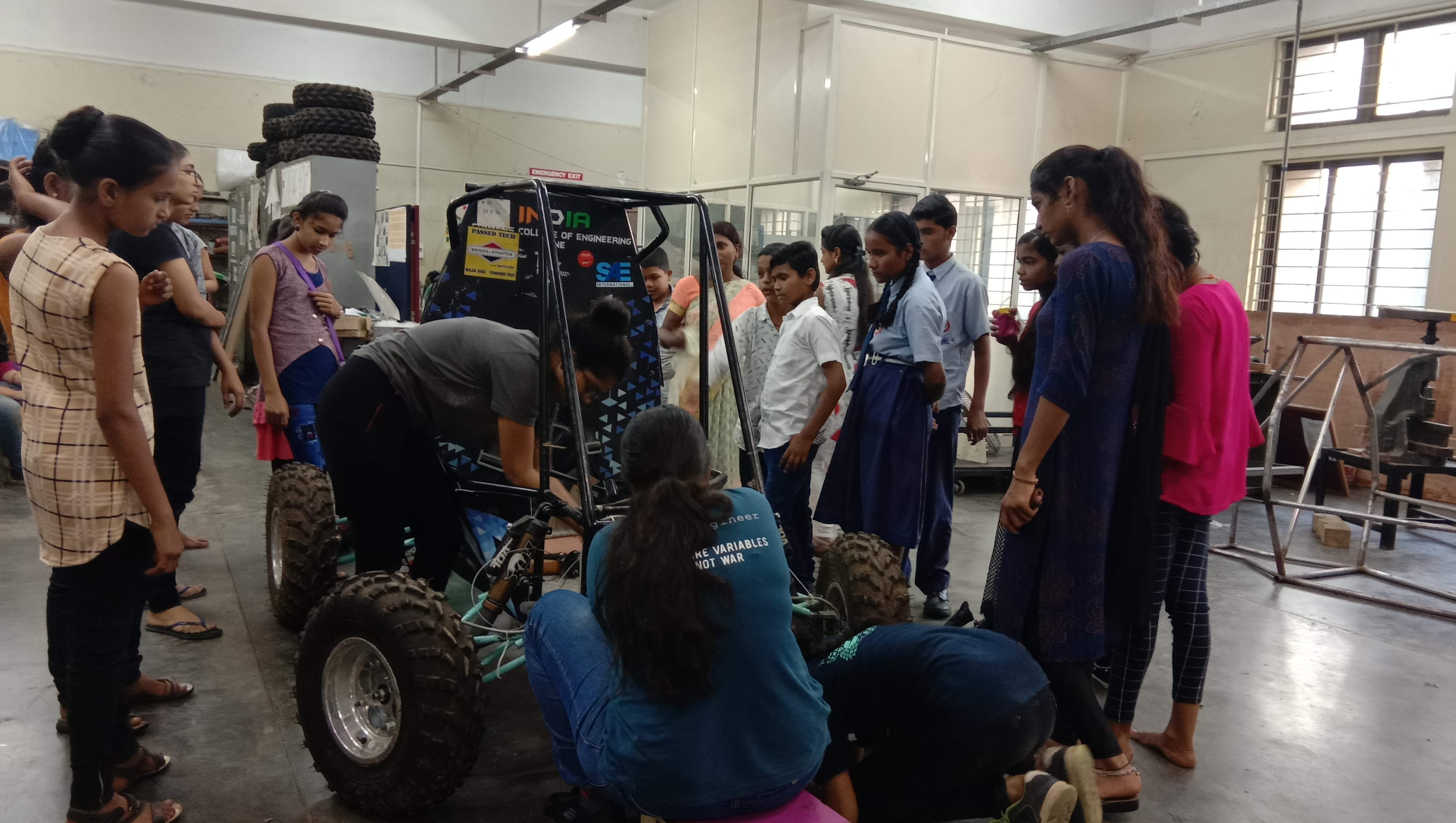
On the 5th of October, 2019, SWE CCEW collaborated with the Idea foundation and had students from three nearby schools visit our college. Some of these have had science included in their academic curriculum only a few months ago, and this was a joint initiative taken by our SWE CCEW affiliate and the idea foundation which aimed at helping the kids broaden their horizons in science. Hence the demonstrations and experiments were based on the theme, ‘Science in Everyday Life’.
The Vice President, Mayuri, interacted with the children and got an animated and spirited response to the ice-breaker games played. The kids were then asked to speak about their dreams and ambitions, while some kids were more than happy to open up, some were shy of being belittled. However, some further ice breaking and a little coaxing did the work. We were successful in establishing the comfort level and the children were elated to share their aspirations.
The kids were split into five batches and given some candy, after which they were taken to the different demonstrations that the SWE members and volunteers had put up together. Since the kids belonged to different grades, the volunteers elaborated on the concepts in such a manner that everyone could comprehend them. The demonstrations included a water level detector circuit, lemon powered circuit, some mathematics demonstrations based on circle-rectangle transformations and others on similar lines. Along with the demonstrations from the members and volunteers, we also had the Robocon team of our college, team Aaveg and the Baja SAE team of our college, team Zenith collaborate with us. The kids visited the robocon lab to see a line sensor bot and understood the concept behind IR sensors. The Baja workshop gave the students an opportunity to have a look at the lathe machines and other workshop equipment. They also saw both the teams at work and their current preparations for the upcoming year’s competitions.
After a heavy dose of information and interaction the students were taken to the canteen to have snacks. It was a heartfelt sight, as we watched the kids chirp away all their new findings to each other while enjoying their snacks and drinks. And to watch them take their share of trash to the bins with no one to behest them was a pride-filled moment. India has a bunch of responsible youth coming up. While speaking to the kids as they were moving between the demonstrations, we asked their opinions on what they had been subjected to up till then, and they all had so much to convey. In ten minutes they had more stories to tell then we could remember. And with those sparkling eyes they moved on to the next demonstration with as many questions as they had about their aspirations.
Here are some excerpts from the volunteers: “I feel so proud about us that we've tried to put in so much effort to ignite that spark, towards knowledge and science, amongst those young minds. It's not only them who've learnt something today, but I had something to take back home too.” -Rashi Gulhane
“The happiness on the faces of the kids, their lit eyes made me feel worthwhile. They were so enraptured by everything they saw and wished to perform the same experiment using the apparatus given by me. Thank you SWE for giving me an opportunity to interact with these small kids.” -Janhvi Bhangale
“Today was an amazing day and I am blessed to be part of such an amazing club. It was a day filled with experiences and realisation. Their insatiable hunger was inspirational. I couldn't thank you guys enough for this memorable experience.” -Sakshi Dighade
SWE Conference 2019
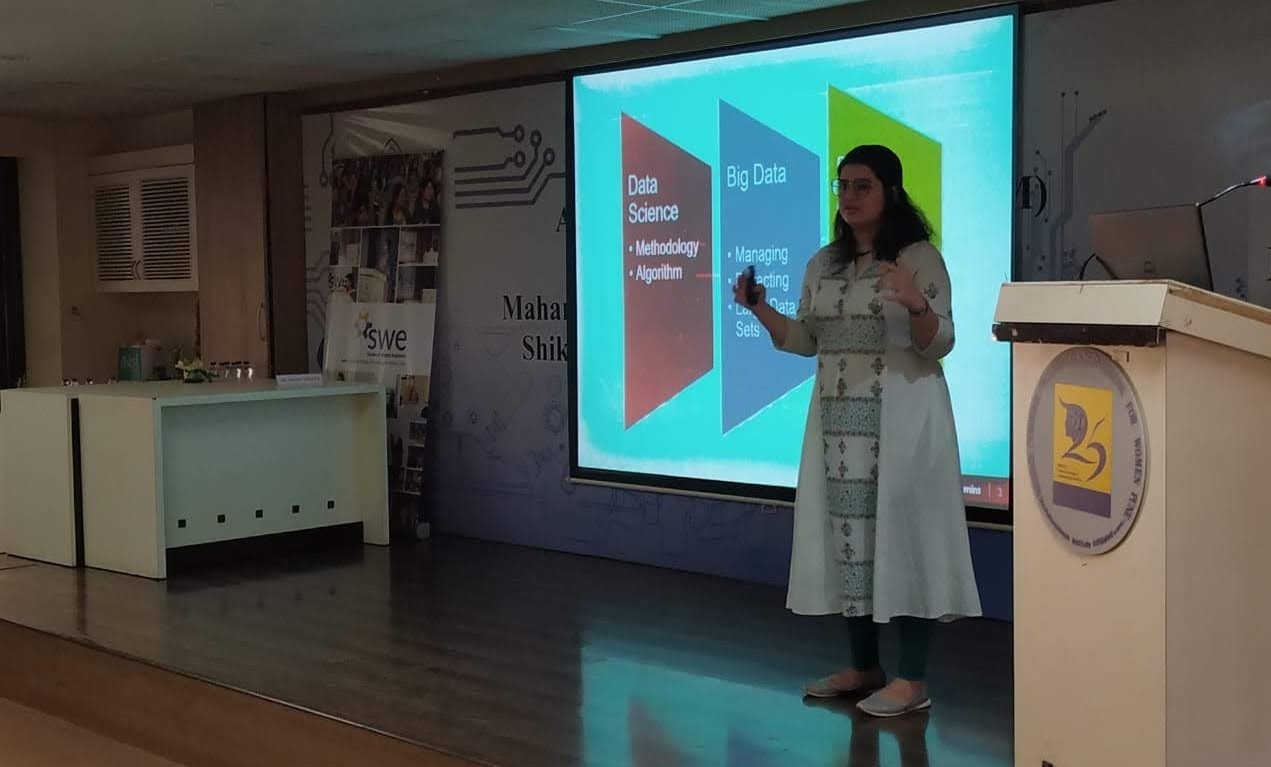
This year, the Society of Women Engineers, Cummins College of Engineering for Women (SWE CCEW) chapter took student development and research to a whole new level with their first flagship event, The Incube Conference with the theme, “Inspiration, Innovation, and Inclusion” on October 12th, 2019 attended by 100 participants. The conference had eminent speakers from Cummins India Limited and John Deere and student speakers from Cummins College of Engineering speaking about various research topics that they had been working on. The conference started off at 9:30 am, by a felicitation of the speakers for the day by Dr Madhuri Khambete, Director of MKSSS’s Cummins College of Engineering, after which Ram Ottikkutti, the CTO of Cummins India gave the opening keynote speech. He touched upon the theme of the conference “Inspiration, Innovation and Inclusion” with respect to Leadership and gave us anecdotal examples from his own life. He talked about leaders that he had encountered in his own career who, with the principles of Inspiration, Innovation and Inclusion, broadened the impact that they had had on their company and people surrounding them. After the keynote session, talks were going to be held in two locations in the college simultaneously and students could attend the sessions whose topics appealed to them.
Neema Nair and Sameer Samudra gave a talk on Leading Inclusion about Women in Technology and LGBTQ+ Inclusion in traditionally cis, hetreosexual male spaces. They talked about the importance of including people from marginalized groups, giving the principle argument that they were, above all else, human and should not be made to feel different on the basis of who they were. They also talked about privilege and their own journeys navigating these spaces and helping others navigate the corporate space as well. Then, Shivani Kamtikar gave a talk on Computational Neuroscience, and spoke about the work that she had done as a part of a summer research internship in the University of Notre Dame. She gave the audience a preliminary introduction to Computational Neuroscience and then spoke about human relationships and computational representations of human relationships, since the research project she had worked on analyzed human relationships with various features like smoking, etc. She also talked about how the data for the project was collected, how it was represented, how the analysis was done, and how the results were verified. Poorva Bhalerao then gave a talk on Algorithms in Astronomy, starting off with the importance of scheduling algorithms in Astronomy. She then talked about various approaches to the dynamic scheduling algorithm problem with an analysis of each approach. She touched upon a brute-force approach, a dynamic programming approach, a greedy approach and the use of Reinforcement Learning in this problem statement. She had employed a greedy approach in her project. Musfera Javed, an employee of Cummins India Pvt. Ltd. shed light on the topic of Data Analytics. She talked about the basics that are required in the corporate world of data analysis and their importance in the industry today. She was followed by a student speaker Anagha Deogankar whose chosen topic was ‘Automatic Velocity Control’ and spoke about what role she played in the Robocon team of CCOEW in the same field. Then, we had Ritvi Mishra talk to us about the implementation of LiFi. She told us about how this new technology provides cable free communication and uses light as a carrier of signals. After this talk, we paused for lunch and resumed with the sessions in an hour.
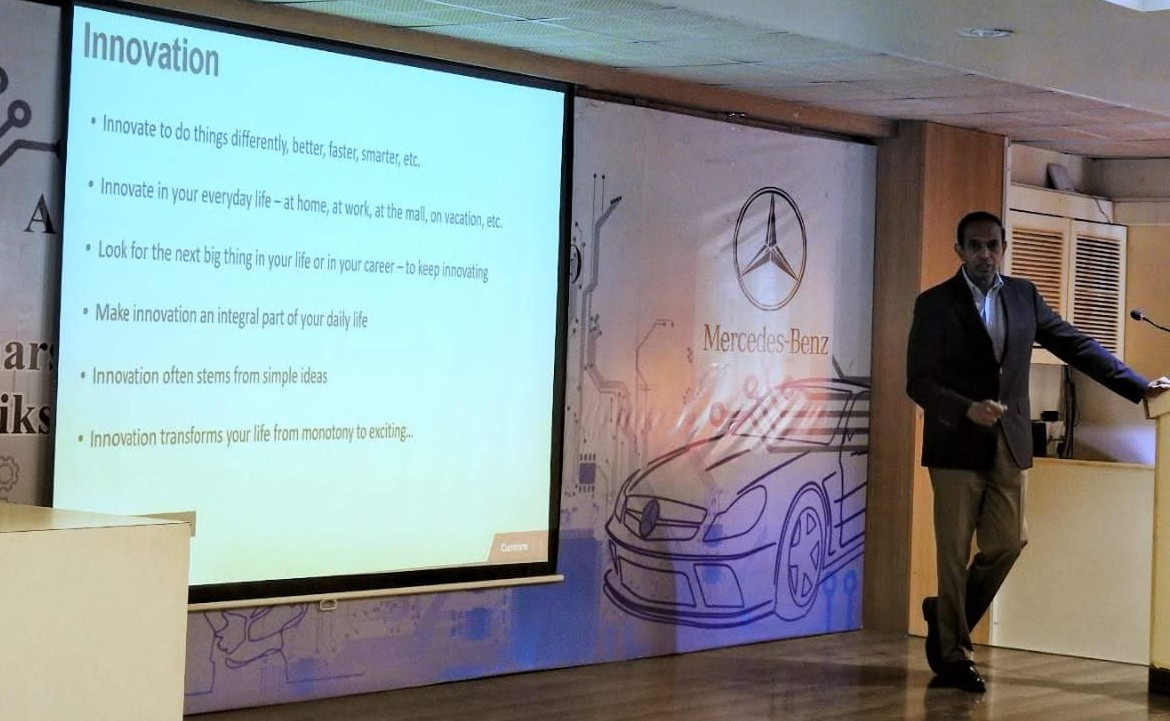
Shalvika Patil spoke about Bias in human relationships and how to navigate other people’s bias and recognize your own. She spoke about bias as an evolutionary instinct, developed over years, and how we might be hindering ourselves if we rely or give too much importance to our biases. She illustrated these concepts through various stories that helped the audience understand about perception (both, our own and that of others) and the importance of assuming good intent.
Tripti Chanda then spoke of Soft Robotics where she spoke about the need for developing materials that further the advancement of soft robots and the importance of soft robotics various fields. She also showed us examples of robots that had been built using these ‘soft’ materials, including a robot octopus that could navigate the ocean currents and a heart that emulated the pumping of the heart and could provide support to patients. Stueti Gupta talked to us about Women in Leadership and how women are just as capable as men to be leaders, if not more. She cited various examples of women leadership in various fields and told us that there is no limit to what we can achieve if we try hard enough. Tanya Jojy spoke on the topic of Software Bots. She told us about the different applications of these bots and how they can affect us in our everyday lives. She also talked about the technology that is required and the current work going on around it. After this, Samruddhi Deode talked about Blockchain technology. She told us about how it is the base of cryptocurrency and its wide range industry application in Bitcoin as well as other fields such as real estate and health.
All in all, it was an extremely enriching experience for each and everyone who attended the SWE CCEW Conference and took back with them not only a lot of new knowledge but also a new perspective.
Sanstha Visit 2019
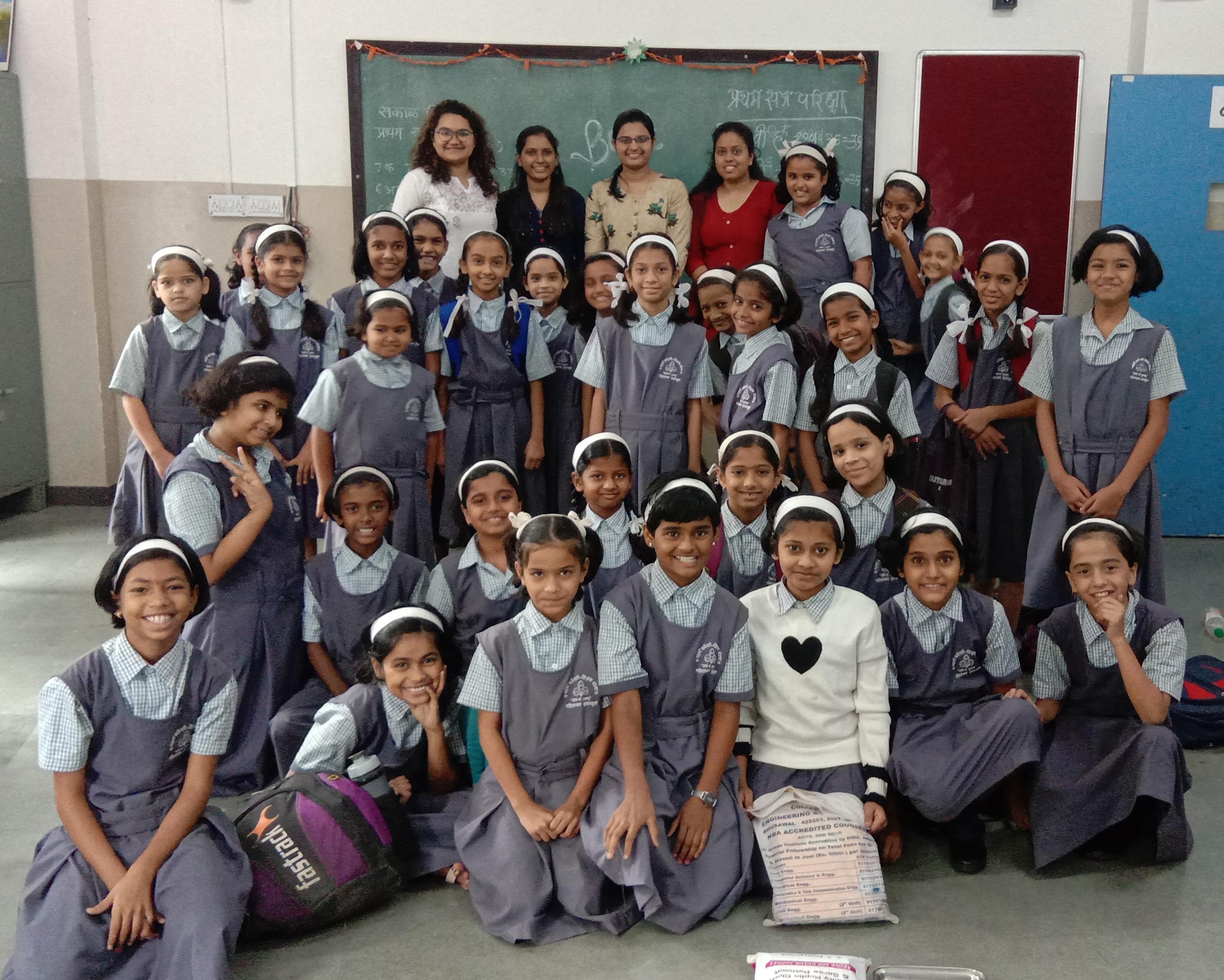
On 19th October 2019, SWE CCEW visited the Mahilashram High School of the Maharshi Karve Stree Shikshan Samstha as a part of its Social Outreach program. The Samstha has been committed to “Empowerment of women through education” and has a century-long history of dedicated work towards making women educated and self-reliant.
The purpose of the visit was to promote STEM(Science, Technology, Engineering, and Mathematics) among young girls since it has always seen a shortage of women. Especially girls from underprivileged backgrounds are barely ever encouraged to take STEM. Therefore, the visit was scheduled to promote STEM education among 1000 underprivileged girls from the MKSSS Samstha.
SWE CCEW sent out an email asking for volunteers from the entire college for the Sanstha visit and we were amazed by the overwhelming response. These volunteers along with the Student Representatives were guided by the Panel members. They were divided into groups of 4 and were briefed about the experiments they had to conduct. Each group was assigned a class to perform the experiments, the classes being three divisions each of grades 5th, 6th, and 7th. The experiments for each grade were finalized keeping in mind the difficulty and their respective curricula. The experiments included the Ideal gas experiment, introduction of conductors and insulators, demonstration of electromagnetism, optical inversion among many more.
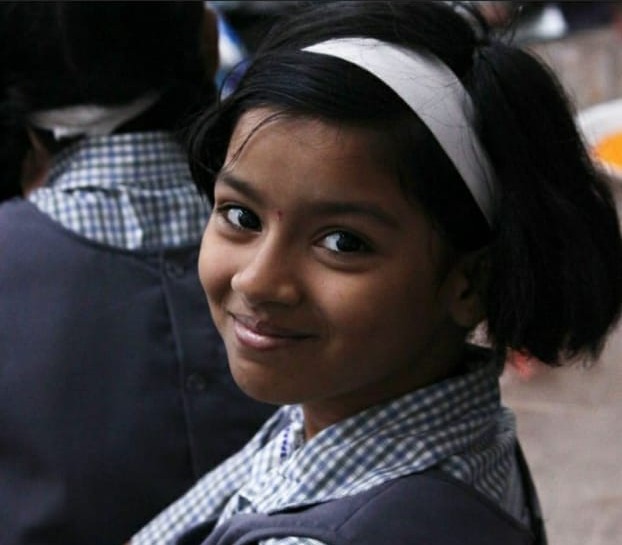
The students were really enthusiastic about the experiments being conducted and interacted with us without any hesitation. We conducted a small quiz in each class with questions related to the experiment we had just conducted. All the students were very excited to answer the questions and we gave them a toffee for each correct answer they got. There was a time when all the hands were up in the air!
The entire experience was really enriching for SWE members and volunteers and it felt great that we could create an impact on the lives of the girls and could encourage them to take up STEM education in the future.
Here are some comments from the volunteers: "The girls at the Sanstha school took such a keen interest in every experiment we performed. Their curiosity, their passion to learn something new was really inspiring. Seeing them enjoy all the activities we had planned really made my day. " -Samruddhi Deode, Head of PR, SWE CCEW.
“It was great to see that the young girls were keen to learn something new and were all ears to our explanation of the experiments. Their attitude towards the entire process was extremely positive which inspired us to do justice to our role. The overall experience was really enriching for me.” - Prerna Amarnani, Head of Administration,SWE CCEW.
Innovation 2020

SWE CCEW had a line-up of some amazing and interesting events which had taken place during the Cummins College Techfest, Innovation. The events aimed to test the technical skills of the students, challenge their creativity and most importantly, gave a chance to the students to create incredible memories. Some of these events gave the participants a deeper insight about the women in STEM.
Google Assistant Quiz: The quiz comprised of 20 questions based on famous female engineering leaders and engineering or technology. The participants could win some exciting goodies related to the theme on answering more than 15 questions right. The quiz created awareness among the college students about women in engineering and other STEM related fields.
Instagram Quiz: This was another fun quiz, similar to the Google Assistant Quiz and was conducted on our Instagram page to grab more eyeballs. The entire aim of such quizzes was to create awareness about women in STEM and social media provides a great platform to do that because of its immense popularity among college students. Encouragement was provided to the participants in the form of exciting goodies if they were able to answer all the 20 questions right.
Poster presentation: This event was designed to emphasise the ability to deliver visual presentations and raise awareness about new technologies, research and female engineers who have done remarkable work in the field of engineering. All entrants had to submit their poster on an A1 Size sheet one day prior to the fest. Posters could be handmade or digitally made.
The posters could tell the story of a strong female engineer, new innovations in engineering and technology, some research or projects the participants were doing or could just explain a technology the participant found fascinating.
The theme was, “Women who persisted in engineering”, to erase the prevalent mindsets and stigma around us which women have to face every day. The posters enabled the students to express their feelings and gave them a platform to talk about their thoughts about women in STEM through their posters. It was not only an expressive but creative way as well. The phrase, “If you like it then you better stick a pin in it” was extremely relevant to this event as the posters were like a memory pin for the audience. Good posters with a clear message are always succinct and memorable, they can arouse empathy delivering your message to the hearts and minds of people with emotive visual imagery demanding attention, and the amazing entries we saw during the event surely did that. The event allowed the participants to get their message through to a wide audience in an expressive and memorable manner.
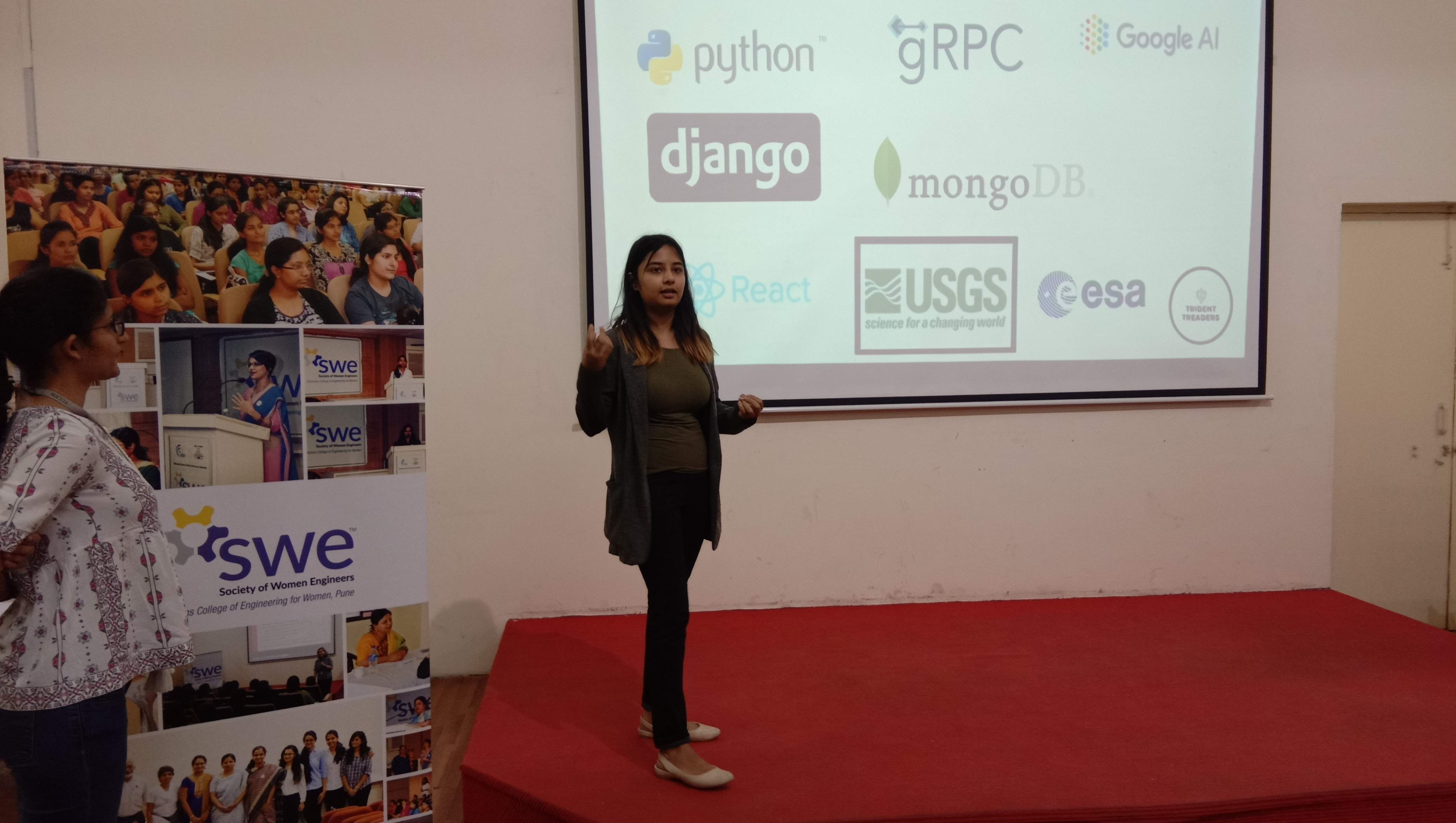
PhotoBooth: The students at the Techfest could take a picture at our Photo Booth with our props and tag us on their Instagram story/post. Winners got some fun and exciting goodies.
A picture is worth a thousand words and surely this was proven true at the PhotoBooth of SWE CCEW at the Techfest, Innovation. Students took pictures at the booth with our props which had the messages, ‘STEMINIST’, ‘Be That Engineer’ or ‘Sisters in STEM’ written all over them. They posted these pictures on their social media platforms and tagged SWE CCEW. This was done to create awareness and to celebrate the achievements of women who have forged the way for those of us in science today.
The Solution Room: This event was designed to provide solutions to real world problems with the help of technology. The problems would fall under domains like health, education, environment and economy. The event tested the ability of the participants in coming up with a technical solution to a real-life problem and develop a product out of it. Through solution room the participants had the chance to be a part of the SWE tech team, a flagship project of SWE CCEW aimed at solving a real-world problem. Besides this participation certificates were provided for all the participants for this event.
The event was open to all the branches with a variety of problem statements to chose from. This was done to enhance their team-building, leadership and technical skills.
The teams were judged on some predefined criteria throughout the two rounds. Round one included selection of a topic or problem statement, a unique name for the team/company related to the solution, a feasible technological solution and a pitch to the judges in the form of a presentation. The teams were judged on the basis of the selection of their topic, presentation skills and solution idea.
In round two, the selected teams had to come up with a more detailed model of their product or solution including a organizational structure, a working position for each member and a budget. A final presentation had to be made to the judges with the final product. The teams were judged on the basis of technical knowledge, creativity in the pitch, feasibility of the solution, strategic usage of the other players available to them, Interviewer/Interviewee skills, and final pitch.
The winner of each session had to compete with the other winners to stand a chance to collaborate with Team Tech (by SWE) to implement their projects. All participants won exciting prizes, goodies and certificates.
Kick-Start Talk Series
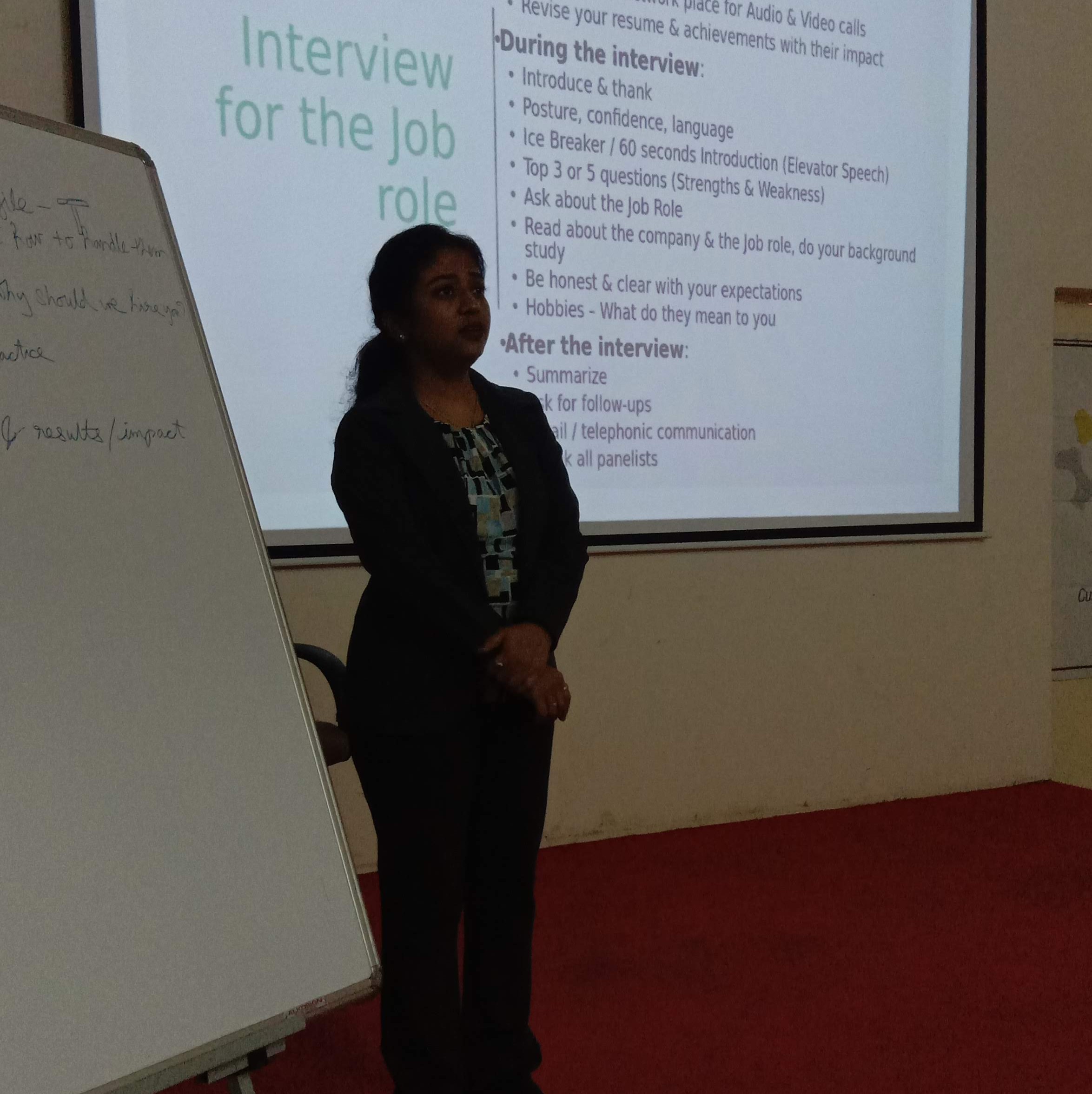
To inaugurate the Grey Project, a peer-to-peer mentorship program, SWE CCEW collaborated with the SWE Pune affiliate to organize a series of fascinating tech- talks to enrich the students’ knowledge. The event, conducted on 11 th January 2020 comprised of three talks by senior industry professionals.
The event started with the ‘Resume Writing and Interview Skills’ workshop, conducted by Vidya Jaladi. She is an assistant general manager at John Deere. Having completed her Masters degree in Computer Management from SPPU, she went on to pursue an executive program in Statistics Leadership from IIM Indore. She started right from the basics regarding the length and format of the resume, and went on to explain several points that strengthen a resume. She highlighted the importance of the title, contact information, career objective, education, skills, projects, work experience, achievements sections and the power verbs to use in each section. The session provided an excellent guidance to the newbies from the first- year on how to draft their first resume. The more experienced students of SY, TY and final year also picked up a lot of useful points to improve their interview experience. Vidya ma’am gave a lot of interview tips about choosing the correct outfit, our body language, about greeting the interviewers , introducing ourselves and closing the interview. Towards the end, she threw light on few controversial points of political, cultural, social nature which everyone must avoid mentioning. Overall, the session was highly interactive and informative. The key takeaway from it was ‘How to present the best version of the Brand- YOU’.
This was followed by a highly interesting session on Electric and Autonomous Vehicles by Mr. Sachin Tyagi. He is a strategic business development manager at TomTom India pvt ltd. He holds an extensive 15-year- experience of working with multinational organizations in product management, business development, project management and product marketing. Sachin sir showed the students how electric and autonomous vehicles would be essential in the future. He explained the current use cases along with the modifications which could be made in the future. With a lucid and eye-catching presentation, he explained the working of an autonomous vehicle in detail. He covered the aspects of routing, geocoding, navigation, visualization, etc. Sir highlighted how TomTom maps enable a hassle-free driving experience to the EV users. Users are able to find the best route to any destination, without any manual pre-planning! TomTom combines both vehicle and map data to improve the accuracy and provides useful features such as adding stops for longer trips and sending relevant warnings along the route. He also spoke about how TomTom reaches billions of people every day. He discussed the key factors that make them unique and how their customer-first approach coupled with a partnership mindset is loved by all the customers.
The next session was an AI and Machine Learning workshop conducted by Dr. Savita Angadi. She holds a Ph.D. in Non-linear dynamics from IIS-Bangalore and HGF postdoctoral fellowship from ELRC Julich- Germany. Her extensive experience of 22 years in the field of analytics and data mining and a thorough understanding of all the principles made her talk super enlightening for all. She explained how data can be generated and collected through a wide variety of sources. She discussed how different types of researches are conducted for collecting data and how it is analyzed later. She focused on the concept of big data and its use cases. The students were able to grasp the enormity of the big data in five dimensions, considering the volume, variety, velocity, variability and complexity. Her easy language and friendly interaction made the vast subject of machine learning seem quite uncomplicated. Surely, the students were motivated to explore this highly in-demand field in a greater depth.
Cummins India Visit
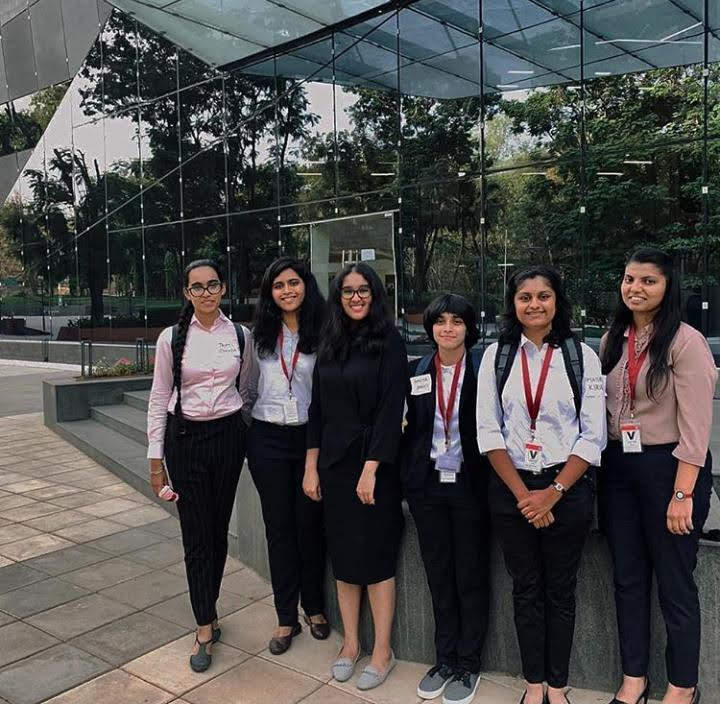
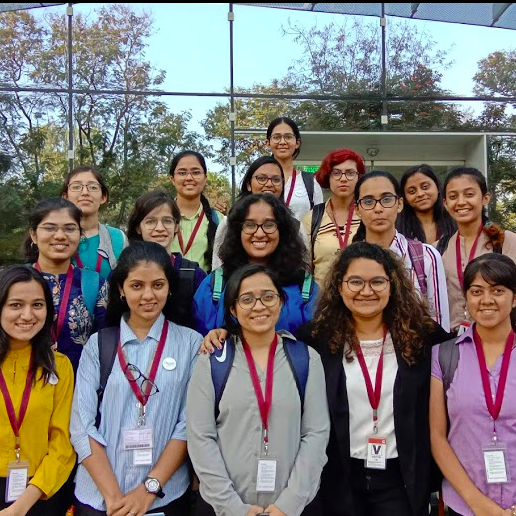
SWE CCEW conducted its annual GBM and Industry Visit at Cummins India Ltd., Pune on Monday, January 27 th 2020. The SWE panel members and a few select student representatives along with faculty representative- Dr. Anagha Kulkarni ma’am were a part of this event.
Initially, the team met up with Neema Nair, Industry Consultant of SWE CCEW at the time, and discussed with her about the various events SWE CCEW conducted throughout the semester in the college.
Then, the girls had an opportunity to talk to Dr. Pradheepram Ottikkutti, Chief Technical Officer at Cummins India, who talked about the struggles one faces during their time at work and gave some valuable advice on how to handle yourself in workplace and how to manage professional life effectively.
The team, then, took a tour of the research lab in the company where the engines hey were briefed about cloud, its applications and how to work with it.
The girls learned ways in which Cummins India makes the workplace friendly and comfortable for women by providing them with all the necessary amenities. They were also informed about how more and more companies are becoming SWE affiliates, how more women are stepping into different sectors of the industry and how this promising trend continues to grow.
The girls were also actively involved in the discussion by asking them about their opinions, their feedback and their expectations from a company as women employees.
The visit was an attempt for the girls to gain some industry exposure. By the end of the visit, the girls gained informative insights into the work life of an industry employee, were on the receiving end of beneficiary advice on various things, learned remarkable information about Cummins India and carried home an incredible experience that would stay with them for a long time.
The Grey Project
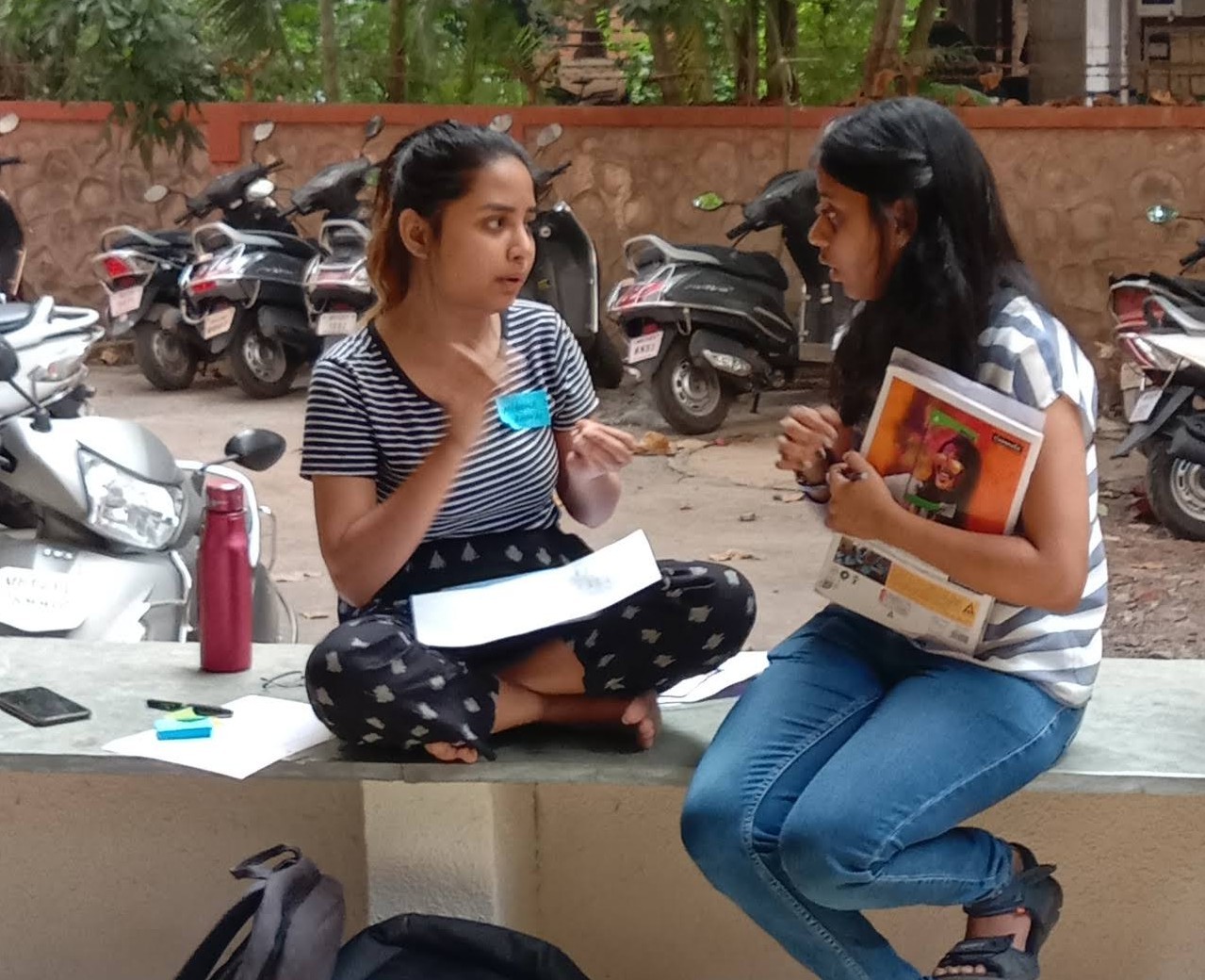
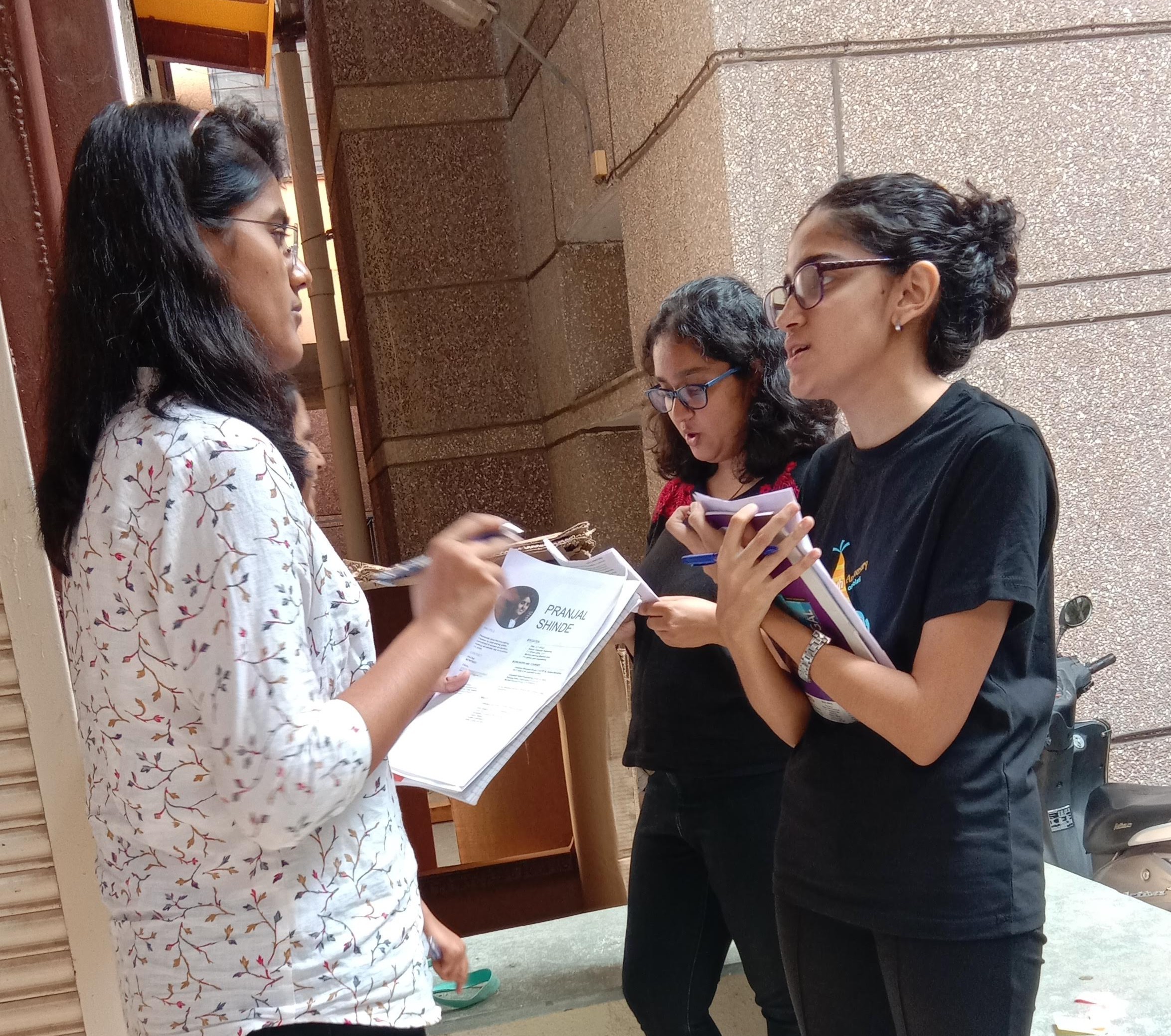
As a part of our leadership program, SWE CCEW decided to start a program for the freshers in our college. In order to build a strong career and get equipped to survive in the corporate world, students need to step on the right stepping stones at the right time. Managing academics, extra- curricular activities, grabbing the right opportunities at the right time, exploring and digging into new fields, improving technical knowledge are a few things which all the students try to put together within the four years of engineering. Thus, a holistic development as an individual is quite important, which would set the students apart from the other 15 lakh engineers graduating in this country every year.
In this scenario, the experiences of seniors as well as industry professionals are of great help to the students which guide them throughout the four years of engineering. Keeping this idea in mind, SWE CCEW introduced the Grey Project- a program including mentorship sessions as well as professional industry exposure. Grey project, previously titled as Brain Dates, was a peer-to-peer mentorship program. The name of the program comes from the acknowledgement of the grey cells in our brain, while also considering the grey area that is left out during formal education. The settling in, the personality development, the time lost to ignorance or absence of courage which can be overcome by someone who has already experienced the system, cancelling out the scary grey area.
Our very first event under the grey project was a mentor-mentee session- a riff on speed dating. Freshers belonging to the first and second year were given an opportunity to interact with all the willing mentors from the third and fourth year for a short time. During this period, they had to exchange ideas regarding their areas of interest and expectations from the program. Further they generated a score based on the level of commonality of thoughts. The panel members then analyzed these scores, matching interests and resumes to assign a mentor to each mentee with similar research content and interest area. The mentees interacted with their mentors and were provided guidance on extra-curricular courses and projects. They even helped students get clarifications on queries regarding preparation for interviews and internships and further regarding higher education possibilities and specialization.
2018-2019
Workshop on satellites and career development By Anand Lalwani
Organised by the SWE CCEW Affiliate- 1st September 2018
The SWE CCEW affiliate organised a guest lecture on 1st September 2018. The session was conducted by Anand Lalwani who is currently pursuing his Phd from Stanford University in electrical engineering. He completed his Bachelor of Science in Engineering Physics with an emphasis on Photovoltaic Energy from Brown University of Engineering. Anand previously worked at E-14 technologies where he worked on data analysing and designing a robot minimart for transport warehouses. He moved on to Mahindra Susten as a robotics intern in the RnD department and worked on an autonomous solar panel cleaning robot project. He did his third internship at Thermax Global where he worked for solar thermal and solar photovoltaic departments. He proceeded to intern at the Nuclear power corporation of India where he got in depth knowledge about physics in nuclear reactors. He’s presently working alongside studying as a consultant at Ampere energy where he worked on home and solar battery technologies and developed softwares for prediction algorithms using AI to reduce electricity bills.
Anand started off by talking about an incident that motivated him to get into this industry. He talked about how there were so many real world problems and situations that needed simple but efficient solutions and how there are several small villages in India that don’t get enough electricity and water, the traffic problems we face in india and proposed a few thought provoking solutions. He went on to talk about how he led his team to build a satellite for NASA, the challenges they faced, how they stuck to their deadline and he also explained a few of the components and its working. He also spoke about LiFePO4 batteries and it’s uses. Next he spoke about how he found his projects and internships only through networking and trying to solve real world problems. He explained the pros and cons of studying in the US, the difficulties we as Indians face during migration and he spoke about how we can apply and get into universities abroad. He emphasised on the importance of interdisciplinary work and how we could solve a lot of problems only through communication, learning and co-working. He also spoke about start-ups and entrepreneurship. Students were encouraged to ask as many questions as they wanted, to which they received satisfying answers. After the session they had an opportunity to interact with him one on one. This was a very informative and inspiring session.
Promoting STEM education at the MKSSS Sanstha.
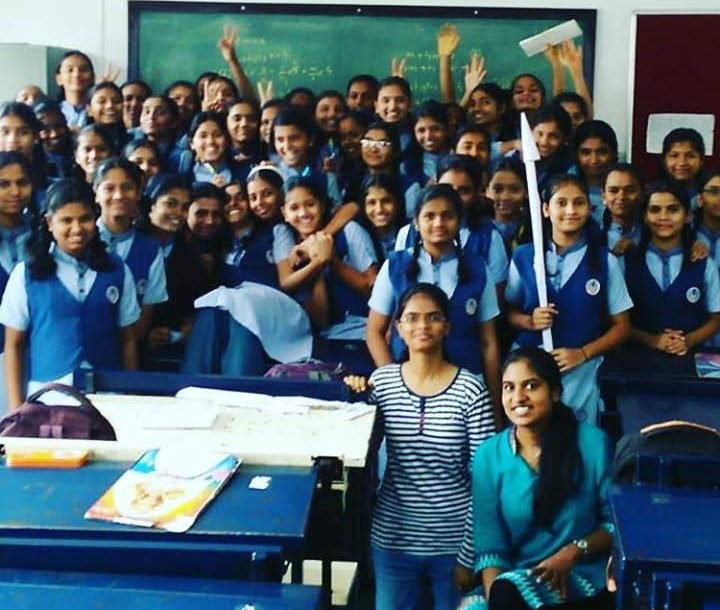
1st September 2018.
SWE CCEW Affiliate organized a workshop promoting STEM education for the underprivileged girls living at the MKSSS Samstha. Our primary aim was to make them understand why science and technology is so important in today’s world. It was observed that these girls after 10th grade would either drop out from school or take up vocational training or pursue further education in the field of arts. Very few of them took up science. This was the sole reason we picked the Samstha to promote STEM education hoping that we have had a significant impact on atleast 10 out of the 360 girls we taught. For this session we were accompanied by 20 volunteers who conducted activities for these girls in Marathi.
The topic selected was SCIENCE IN EVERYDAY LIFE to encourage the students to think outside the box and making them realise that everything we see around us is science. What was once sheer fantasy is now almost reality by virtue of the achievements of humans in science. We targeted 3 classes 8th, 9th and 10th for our session.
A few of the activities we held were- Building the tallest paper tower, explaining the litmus test on acidic and basic solutions and demonstrating static electricity. There were 3-4 volunteers assigned to every class. The volunteers, panel, staff and students had great fun organising these activities.
It was teamwork and lots of energy that helped us make this event a success. A desire to do something for society provoked our volunteers to come forward and ignite the spirit of learning in these young minds.
Introductory Session 2018 of SWE CCEW
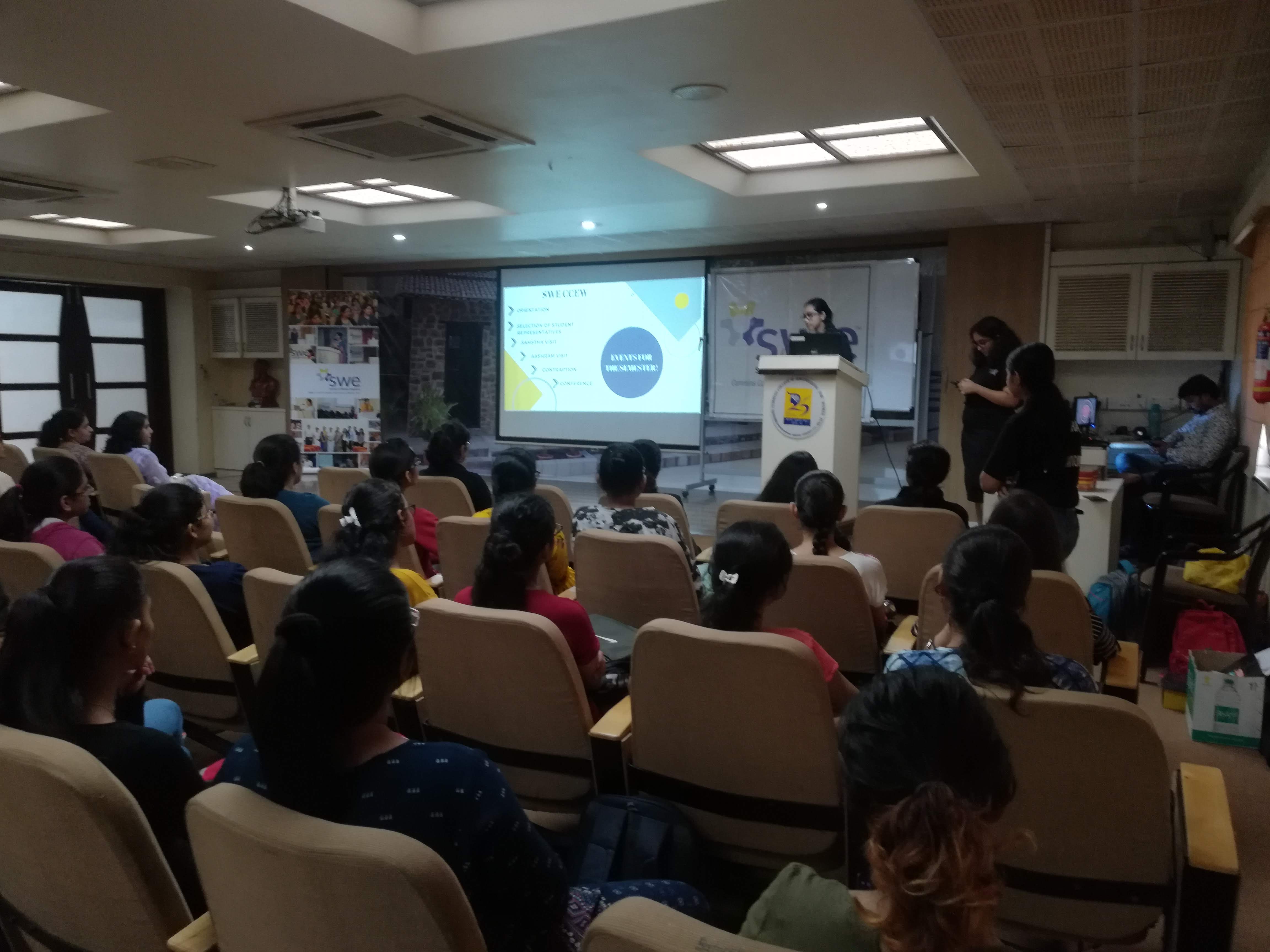
SWE CCEW Affiliate organized an introductory session on 17th August 2018 for the freshers and introduced to the world of SWE! For this endeavour we were accompanied by our guests Mrs. Neema Nair and Mrs. Neha Verma from Cummins Inc. . Students from Cusrow Wadia Institute of Technology, Pune also joined us for this session.
The session began with talk from Mrs. Neema Nair which acted as an icebreaker making the audience enthusiastic. She briefed us about SWE and how it makes a difference in various walks of our life. She talked about the “power pose” and how one must have confidence in their own capabilities and skills. Also mentioned how SWE helps to network and connect with people.
Followed by her there was a presentation by Mrs.Neha Verma where she talked about her career path and how SWE had played a vital role in her life. She shared with us the “Coffee Story” which helped us realize that we have all the resources, they just need a proper sense of direction. We also had a question-answer session, where students asked questions and our esteemed guests were more than happy to answer them.
Next Shagun Sengupta, spoke about the journey of the SWE CCEW affiliate. She gave an insight of various activities that we had under the affiliate. The audience were made aware of the upcoming activities and how they can be a part of SWE. To end the session on a fun note we had the game bingo arranged for everyone.It made the session, more interactive.
Promoting STEM Education at the Maher Aashram
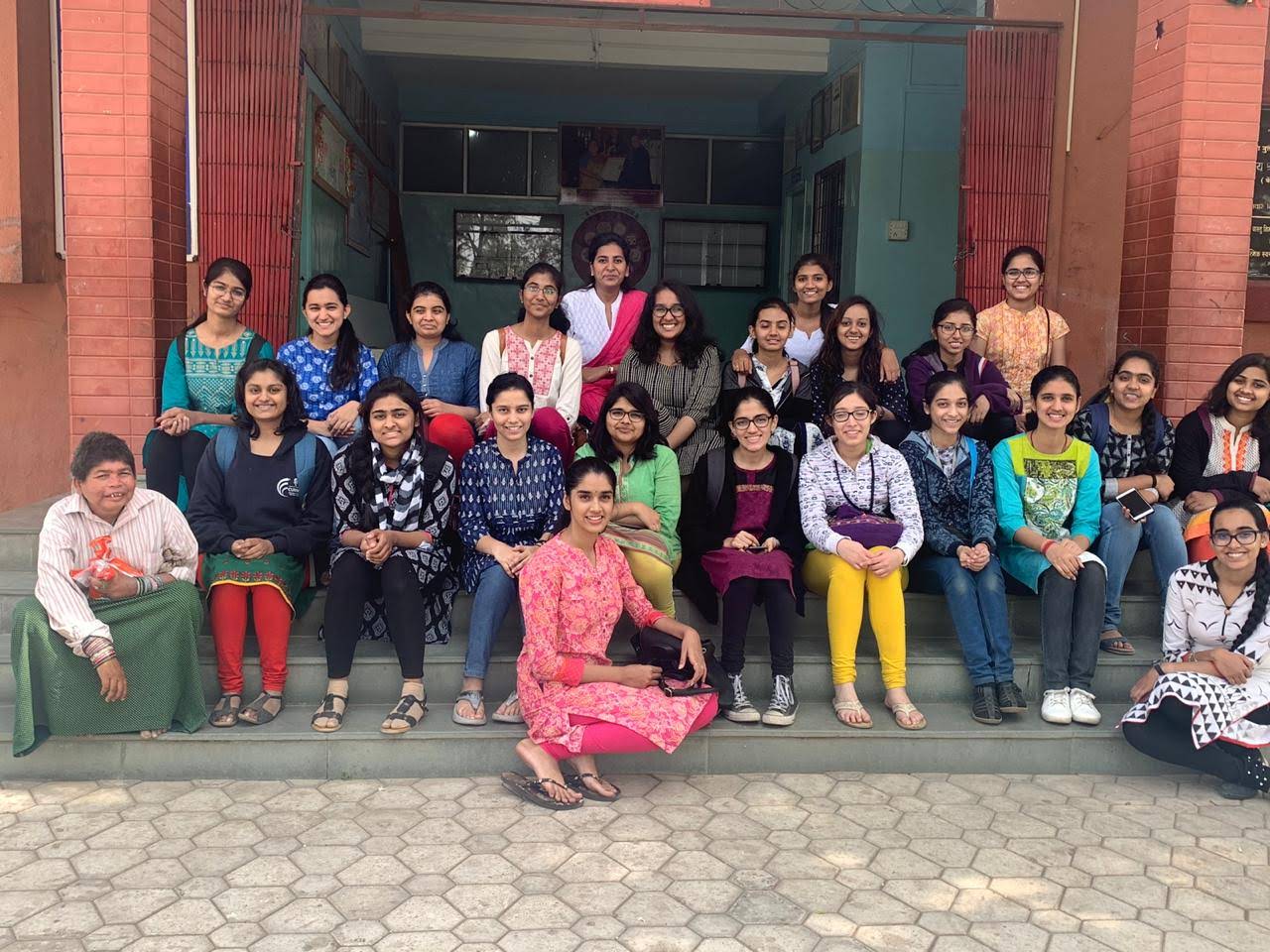
26 January 2019
The SWE CCEW affiliate organised a visit to the Maher ashram, an orphanage, old age home for women and an institute for mentally disabled women. On the occasion of the 70TH Republic day of India, the team aspired to perpetuate the fascination and curiosity in the young minds of the ashram by giving them a chance to witness some demonstrations of STEM based on some everyday phenomenon, like surface tension.
The session started out with a very lively welcome from the kids. As they warmed up to us we helped them dive into the world of adhesion and molecules with the first demonstration. The team members and the volunteers with the help of coloured water and paper napkins explained the capillary action and how important a role it plays in plants.
The next demonstration made the kids look around as they observed and understood the very widespread phenomenon of surface tension through water pepper and oil.
The dancing rice demonstration pushed the young minds to observe and understand the concept of buoyancy as they simultaneously witnessed a displacement reaction involving release of a gas, CO2.
The last demonstration helped the kids observe the basic concept of miscibility through different coloured solutions. The innocent fascination on the kids did tempt us to let them believe it magic but their curiosity and knowledge kept our temptations in check.
After some games, a lot of fun, and some brilliant dance performances we bid them adieu on a very high note. The warmth of their smiles and the light in their eyes that have shone upon our lives will always remain unmatched as we live on. Their contagious happiness is the most privilege any of us had received. This experience was definitely an overwhelming one.